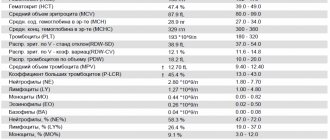Toxoplasmosis is a human disease caused by the microscopic single-celled parasite Toxoplasma gondii. It has a wide variety of clinical manifestations, mainly affecting:
- Nervous system.
- Eyes.
- Skeletal and cardiac muscles.
- Lymphatic system.
The pathogen is very common in nature; it is carried by several hundred species of animals and birds, including domestic ones. The parasite easily penetrates the body, but often does not lead to the development of an acute infection. The disease usually develops in people with a reduced immune response - patients with AIDS and other immunodeficiency conditions, when taking immunosuppressants.
Pathogens of the disease, its sources
The most dangerous is intrauterine infection, which often ends in miscarriage or severe congenital pathologies. For this reason, testing for toxoplasmosis must be carried out in preparation for pregnancy and bearing a child.
According to statistics, toxoplasma is found in 25-80% of the world's population. In some regions, the infection rate reaches 95%.
Toxoplasma is an intracellular parasitic organism that can exist in three forms:
- Tachyozoites. They have a crescent shape and a size of 2-4 microns. A characteristic feature is that with special staining (Romanovsky-Giemsa), the nucleus becomes red, and the cytoplasm becomes blue-gray. In this form, the parasite penetrates the cells of the immune system (macrophages, phagocytes), in which it quickly multiplies. After cell death, tachyozoites are released and infect healthy macrophages.
- Bradiozoites (pseudocysts). This is a protective form of Toxoplasma, in which most of the life activity of the pathogen occurs during a normal immune reaction on the part of the infected organism. The shape of the bradiozoite cell is elongated, the nucleus is displaced towards one of the ends. Toxoplasma in this form often forms tissue pseudocysts consisting of many parasitic cells covered with a common protective membrane.
- Oocysts. This form of Toxoplasma is found only in the intestinal epithelial cells of the domestic cat and its wild relatives. Formed as a result of sexual reproduction of the parasite inside the cells of the animal. The immature oocysts are then released into the environment in feces. Given sufficient temperature and an influx of fresh oxygen, the oocysts mature within 2-7 days. After maturation is completed, oocysts become capable of infecting intermediate hosts of Toxoplasma, including humans.
The main source of infection is representatives of the cat family, the overwhelming majority being domestic cats. The mechanism of transmission of the parasite is fecal-oral. Implemented through:
- Consumption of insufficiently thermally processed meat products (especially pork and lamb).
- Through poorly washed vegetables, herbs, fruits.
- Failure to comply with personal hygiene rules (unwashed hands).
Rarely, direct infection with Toxoplasma through microdamage to the skin is possible. The parasite is rarely transmitted from mother to child. On average, one infection per 2-3.5 thousand pregnant women. It is most likely that the fetus will become infected with Toxoplasma if during pregnancy the pregnant woman’s body encounters the parasite for the first time.
Susceptibility to Toxoplasma is extremely high; single oocysts are sufficient for infection. Young people are most susceptible; in older people (after 60 years), the parasite is detected much less frequently.
Causes of toxoplasmosis
The immediate cause of the development of this disease is infection with a parasite, Toxoplasma, which has a rather complex life cycle. The source of infection is domestic and street cats (the main and final host of Toxoplasma). Somewhat less frequently, the source of the disease can be rodents, birds, cattle and other farm animals. Infected animals excrete a mature form of toxoplasma (oocyst) in their feces, which, penetrating the body, causes the disease. Oocysts are quite resistant to adverse environmental factors and can remain in contaminated soil for a long time.
Transmission of the disease can occur in several ways:
- Intrauterine infection , or vertical transmission - infection occurs from a mother with toxoplasmosis, and the primary infection with toxoplasmosis must occur during pregnancy. This transmission mechanism is extremely dangerous for an unborn child, since it can lead not only to the formation of developmental anomalies, but also to the death of the fetus.
- Due to the consumption of contaminated food (most often dirty vegetables, berries), as well as water. It is also possible to become infected by consuming insufficiently cooked meat from animals that have been infected with toxoplasmosis.
- In the absence of hygiene skills (washing hands after contact with animals whose fur may contain oocysts).
- After a blood transfusion , organ transplantation from a person infected with toxoplasma.
Acquired toxoplasmosis, symptoms
The majority of those infected have no obvious clinical symptoms; the disease immediately enters the latent carrier phase. The incubation period ranges from 1 to 3 weeks.
When a pronounced clinical picture appears, the symptoms increase slowly. Usually the disease begins asymptomatically with enlargement of regional lymph nodes (inguinal, axillary, cervical). Lymph nodes are elastic, painless, patients do not show any complaints during this period.
Then the body temperature rises to 38-39 degrees, headaches appear, and symptoms of acute gastroenteritis develop. In particularly severe cases of toxoplasmosis, fever begins suddenly, and body temperature can rise to 40 degrees or more. Intense sweating, severe intoxication, abdominal pain and macular rash are observed.
After the first week of development of the infectious process, the spleen and liver become enlarged. Aching pain may occur in large muscle groups of the lower and upper extremities. Every fifth person develops chorioretinitis during this period, which manifests itself in loss of areas of the visual field.
Starting from the second week, the symptoms of gastrointestinal tract damage begin to fade. Symptoms of enteritis decrease and quickly disappear, and overall intoxication of the body decreases. At the same time, the lesion develops:
- Musculoskeletal system. Pain in the limbs and joints increases, and mobility and fine motor skills may be impaired.
- Reticuloendothelial. Manifests itself as hepatolienal syndrome, mesadenitis.
- Cardiovascular. Heart rhythm disturbances and symptoms of myocarditis or pericarditis often develop.
At 3-4 weeks, the disease ends with the attenuation of all manifestations and the transition of toxoplasmosis to asymptomatic carriage. When exposed to negative factors that weaken the immune system, the disease may manifest with the development of the above-described clinical picture, which again enters the latent phase.
Frequent relapses of acute toxoplasmosis, especially against the background of immunosuppressive factors, can lead to serious complications. More common:
- Myocardial dystrophy.
- Psychoneurological pathologies.
- Decrease in intelligence.
- Atrophy of the optic nerve up to complete blindness.
- Chronic fatigue syndrome.
Acute toxoplasmosis in women can lead to menstrual irregularities, miscarriages and other pathologies of the reproductive system.
Chronic acquired toxoplasmosis is a fairly rare phenomenon and is considered an AIDS-associated form of the disease. It occurs with periodic exacerbations; complications from the central nervous system often develop in the form of encephalitis and damage to the visual organs.
The most severe consequence of chronic toxoplasmosis is a generalized infection during which multiple organ failure quickly develops, sometimes this complication ends in the death of the patient.
Toxoplasmosis
Diarrhea
Vomit
Allergy
Worms
8859 January 25
IMPORTANT!
The information in this section cannot be used for self-diagnosis and self-treatment.
In case of pain or other exacerbation of the disease, diagnostic tests should be prescribed only by the attending physician. To make a diagnosis and properly prescribe treatment, you should contact your doctor. Toxoplasmosis: causes, symptoms, diagnosis and treatment methods.
Definition
Toxoplasmosis is a widespread parasitic disease that affects the nervous system, eyes, spleen, liver, and heart. According to WHO, the number of people infected with toxoplasma is about 1.5 billion people.
In adults, toxoplasmosis is usually asymptomatic. The disease with clinical manifestations often develops in the most susceptible and vulnerable group of the population – children.
Causes of toxoplasmosis
The causative agent of toxoplasmosis is
Toxoplasma gondii
. Toxoplasma is an intracellular parasite that is capable of asexual reproduction in human tissue cells. During the process of reproduction, clusters of parasites form inside the cell with the formation of pseudocysts. If the process becomes chronic, true cysts with their own membrane are formed.
Humans are the intermediate host and become infected with sporozoites, invasive forms of Toxoplasma that can penetrate the body.
Sporozoites are excreted in the feces of cats, and if the rules of personal hygiene are violated, a person becomes infected (this explains such frequent infection with Toxoplasma in early childhood - due to the behavioral characteristics of children and their undeveloped hygiene skills).
Another form of toxoplasma is cystozoites - they enter the human body when eating the meat of sick animals if it has been poorly heat-treated.
Toxoplasma enters the lymphatic system through the gastrointestinal tract and, through the lymph flow, into the lymph nodes. At this stage, against the background of intensive proliferation of toxoplasma, inflammatory changes are formed in the lymphoid tissue. Next, the parasites penetrate the systemic bloodstream and spread throughout the body. Depending on the end point of their migration, the corresponding clinical picture of the disease develops.
Reproduction in organ cells is accompanied by the release of toxic waste products of toxoplasma, which can cause allergic reactions in the body.
Over time, the immune system destroys all vegetative forms that are capable of reproduction, and only toxoplasma cysts remain in the body, hidden from immunological surveillance due to a thick membrane.
Under the influence of factors that reduce the body's immune forces (for example, HIV, the use of cytostatics, glucocorticosteroid therapy), re-activation of Toxoplasma is possible with its further spread throughout the body.
If infection occurs during pregnancy (after the 2nd month), Toxoplasma can enter the fetal bloodstream and lead to the development of the disease, as well as the formation of severe malformations.
Classification of the disease
Depending on the timing of Toxoplasma infection, congenital toxoplasmosis is distinguished (with intrauterine infection) and acquired (when infection occurs after birth).
With the development of clinical symptoms, mild, moderate and severe forms of toxoplasmosis are distinguished.
Symptoms of toxoplasmosis
The clinical picture of toxoplasmosis depends on the form of the disease.
The most common is asymptomatic primary toxoplasma infection, which in the absence of immunodeficiency factors does not manifest itself in any way.
In rare cases, invasion of Toxoplasma into the body of previously healthy people causes an increase in body temperature, a slight enlargement and tenderness of the lymph nodes, a maculopapular rash, often mistaken for urticaria (red in color with small elevations - papules), and an enlarged liver. Even less commonly, Toxoplasma causes inflammatory processes in the organs of vision.
The incubation period of toxoplasmosis ranges from 3 days to several months. It is usually asymptomatic; in rare cases, patients complain of weakness and headache.
In the acute form of toxoplasmosis, at the end of the incubation period, the temperature suddenly rises to 39°C degrees, severe weakness, headache and muscle pain appear, appetite decreases, and sometimes there are skin rashes. The rash is distributed evenly throughout the body, rarely occurring on the scalp, palms and soles. The nature of the rash is maculopapular with a tendency to merge. At the same time, the lymph nodes, liver and spleen enlarge. When the heart is damaged, cardiac arrhythmias are recorded. Mental disorders, loss of consciousness, paresis and paralysis, repeated vomiting, severe headaches are possible - all these symptoms indicate damage to the central nervous system.
In mild forms of acute toxoplasmosis, the disease manifests itself as malaise, a slight rise in temperature, nausea, and diarrhea.
Usually acquired toxoplasmosis ends in recovery.
In the chronic course of toxoplasmosis, such a clear clinical picture is not observed. Symptoms of chronic intoxication are revealed: weakness, loss of appetite, sleep disturbance, discomfort in muscles and joints, fatigue, irritability, headaches, rapid heartbeat. One of the common manifestations of chronic toxoplasmosis is progressive eye damage. In rare cases - convulsions.
A long course of the disease can lead to decreased intellectual development and various mental disorders.
Congenital toxoplasmosis is also divided into acute and chronic. In acute congenital toxoplasmosis, the child’s condition is severe from the first days, and the prognosis is unfavorable.
In the chronic form, there is often damage to the nervous system with a delay in the mental and physical development of the child.
Milder forms appear at the age of 5–7 years in the form of increased fatigue, seizures and eye damage.
Diagnosis of toxoplasmosis
Diagnosis of toxoplasmosis is carried out on the basis of patient complaints, examination data and a set of laboratory and instrumental examination methods. The scope of the examination may vary depending on the clinical picture, severity of the disease, and the presence of complications.
To identify the pathogen, the following diagnostic methods can be prescribed:
- toxoplasma, DNA determination in blood serum;
Congenital toxoplasmosis occurring during pregnancy
Occurs when the parasite penetrates the placental barrier and infects the fetus. In most cases, it occurs during primary infection during pregnancy, less often - during relapse of toxoplasmosis associated with decreased immunity. The main risk group is women who were not infected with toxoplasma before pregnancy. If, as a result of contact with the pathogen, the disease manifests itself during pregnancy, the likelihood of developing congenital toxoplasmosis is quite high.
The survival rate of children with intrauterine infection depends on the period at which it occurred:
- If infected in the first trimester, the chance of fetal survival is 15%
- On the second – 30%.
- On the third – 60%
Even if pregnancy is successfully completed, an extremely high degree of development of congenital pathologies and congenital toxoplasmosis remains. The disease is severe, especially if infection occurs in the early stages. A characteristic tetrad of pathologies develops:
- Hydrocephalus.
- Bilateral retinochoroiditis.
- Delayed psychophysical development.
- Cerebral calcifications.
The prognosis for congenital toxoplasmosis is unfavorable; in most cases, the disease ends in the death of the newborn or severe disability. Even if, after intrauterine infection, an acute clinical picture does not arise, such children are at risk of developing:
- Mental deficiency.
- Epilepsy.
It is possible to develop many other pathologies that appear months and years after birth. For this reason, an acute form of toxoplasmosis that occurs during pregnancy is an indication for abortion even in the later stages. During pregnancy, it is necessary to undergo a lot of tests that help identify the presence of not only toxoplasmosis, but also CMV infection.
Indications for examination
Analysis is most often prescribed in two cases:
- When planning pregnancy as part of a standard laboratory diagnostic package for TORCH infection.
- If you suspect toxoplasmosis and have certain symptoms.
Laboratory diagnostics are also used to identify symptoms of acute toxoplasmosis in adults or children.
In general medical practice, this test is prescribed if patients exhibit specific symptoms (visual impairment, seizures), as well as for HIV-infected patients.
Treatment methods for toxoplasmosis
Treatment of a child with this disease takes place in a hospital setting. Therapy should include drugs that directly affect toxoplasma (antiparasitic drugs), as well as desensitizing agents, antioxidants, and vitamin therapy. It is also possible to use glucocorticoids. All prescriptions, as well as determination of the dosage of drugs and the frequency of taking medications, are carried out exclusively by the doctor. Self-medication is unacceptable and dangerous for the child.
In addition to treatment, prevention of the congenital form of the disease is extremely important. It helps to avoid the development of acute toxoplasmosis in the mother and, as a result, prevent fetal death or disability of the child.
Differential diagnosis
It is carried out with diseases whose symptoms are similar to acute and chronic forms of toxoplasma infection. These include:
- Infectious mononuclease.
- Mycoplasmosis.
- Chlamydia.
- Cytomegaly.
- Tuberculosis.
It is also necessary to exclude oncological pathologies and systemic diseases (rheumatism, lymphogranulomatosis). The final diagnosis is established after receiving the results of specific serological tests and PCR. There are many laboratory methods for detecting specific antibodies to Toxoplasma. These include:
- ELISA. Linked immunosorbent assay.
- RNIF. Indirect immunofluorescence reaction. Becomes positive from the first week of the disease. High antibody titers can last up to 15 years.
- RSK. Complement fixation reaction. It becomes positive from the 10-14th day of disease development and persists for 2-3 years.
Diagnosis of the disease
It is almost impossible to determine the presence of toxoplasmosis only by external signs. The diagnosis is made based on the results of laboratory tests.
To identify infectious agents, the following is most often used:
- enzyme immunoassay (ELISA) for antibodies;
- polymerase chain reaction (PCR) technique.
These methods help to accurately determine not only the presence of Toxoplasma in the human body, but also the timing of infection. Also, if necessary, intradermal allergy tests with toxoplasmin and other examination methods are used.
IgM antibodies in the blood indicate a recent infection, since after three weeks their number sharply decreases. On the third day after Toxoplasma enters the human body, IgG antibodies are produced. Their level increases slowly, but it is by the amount of these immunoglobulins that one can determine chronic toxoplasmosis or a previous illness. G-group antibodies remain with a person for life and protect him from re-infection.
Material for research
To detect specific antibodies to Toxoplasma, blood is drawn from a vein; the procedure does not require any special preparation. Any biological material is suitable for carrying out a PCR reaction - blood, saliva, tissue samples, other biological fluids (cerebrospinal fluid, urine).
If there is a need to diagnose toxoplasmosis in the fetus, blood sampling from the umbilical cord is possible. The procedure is rarely prescribed because it is associated with a high risk of complications and premature termination of pregnancy. A more gentle method is to take amniotic fluid for analysis by puncture. These methods are used when the results of specific tests on a pregnant woman with suspected toxoplasmosis do not provide sufficient clarity of the diagnosis.
Indications for the use of various laboratory tests and features of interpretation of results in different categories of subjects
Depending on the category of the patient (age group, risk group), the use of different sets of diagnostic techniques is indicated. The correct choice of diagnostic methods is especially important in cases of suspected toxoplasmosis in pregnant women.
Types and forms of toxoplasmosis
Depending on the method of infection, congenital and acquired forms of the disease are distinguished.
According to the nature of the course, it is customary to divide this disease into:
- Acute, which occurs with severe clinical symptoms.
- Chronic - may have periods of exacerbation and remission, but more often it occurs latently, without a clear picture of the disease.
Considering the damage to one or another organ by toxoplasma, the following types of toxoplasma infection are distinguished:
- Toxoplasmosis oculopathy.
- Toxoplasmosis hepatitis.
- Toxoplasmosis meningoencephalitis.
- Pulmonary toxopasmosis.
- Toxoplasmosis affecting other organs: toxoplasmosis myocarditis;
- toxoplasmosis myositis.
Screening for toxoplasmosis during pregnancy
If during pregnancy a pregnant woman develops symptoms that may indicate the development of acute toxoplasmosis, it is necessary to establish the level of specific immunoglobulins using serological methods.
The enzyme-linked immunosorbent assay (ELISA) is best suited to detect the acute stage of the disease. It most accurately shows the concentration of IgM, an increase in the level of which indicates ongoing or recently present acute toxoplasmosis.
Determining IgG levels is less informative since these antibodies persist long after infection and indicate carriage rather than recent infection or exacerbation. Women who have been infected with toxoplasma before pregnancy are insured against infection of the fetus and are not at risk.
It is also important to obtain an immunological picture over time, for which specific tests are carried out at least once every 2 weeks. Studying the dynamics of changes in antibody titers allows us to establish a diagnosis with greater accuracy.
It should be taken into account that the serological picture indicating infection with Toxoplasma is not a 100% indication for termination of pregnancy. In this case, additional tests will be required by taking fetal blood from the umbilical cord and samples of amniotic fluid by puncture.
Prevention of toxoplasmosis
Preventive measures are aimed at maintaining hygiene rules. This means thoroughly washing your hands after going outside, having contact with animals, and before eating. Meat and seafood must be heat treated, and herbs, berries, fruits and vegetables must be washed under running water. Work on personal plots and in the garden must be carried out with gloves, since there are numerous parasites in the ground. Pets should be checked regularly by a veterinarian.
It is important to remember that a healthy lifestyle is the best way to protect against all types of infections and strengthen the body as a whole.
Examination of newborns and young children
Aimed at early detection of the pathogen, before the onset of the acute phase of congenital toxoplasmosis and the development of severe complications. Prescribed when there is a suspicion of Toxoplasma infection, includes the following tests:
- Isolation of the parasite by inoculating material from the placenta and umbilical cord into living mice.
- Carrying out PCR analysis of amniotic and lumbar fluids.
- Computed tomography or MRI of the head. Allows you to identify specific changes in the brain, for example, hydrocephalus, at an early stage.
Serological techniques are also used, but they provide only additional information. The newborn’s immune system is not active enough and is often unable to produce a sufficiently high titer of specific antibodies.
Toxoplasmosis in pregnant women
According to statistics, the incidence of toxoplasmosis among pregnant women is only one percent. Despite this, women should pay special attention to their health during this period, first of all, limit contact with cats, since toxoplasma poses a great danger to the fetus.
If the infection occurs in the first or early second trimester, this can cause a miscarriage or intrauterine infection of the child with subsequent development of pathologies.
If the infection enters the fetus at a later date, it is expressed by the so-called Sabin-Feldman syndrome, which is observed in newborns immediately in the first months of life. It manifests itself:
- hydrocephalus (accumulation of fluid in the brain);
- inflammation of the choroid and retina;
- intracranial calcification;
- delayed physical and mental development;
- epilepsy.
Timely examination and diagnosis of toxoplasmosis in pregnant women determines the management of pregnancy.
Important!
Women who suffered from the disease before conception, or those who have chronic toxoplasmosis, are insured against infection of the fetus. They have antibodies that prevent parasites from entering the child's body.
An additional protective barrier against various pathogenic microorganisms is the placenta, which forms by the second trimester of pregnancy.
Examination of patients with HIV infection
Diagnosis consists of regular monitoring of immunoglobulin G titers using serological methods. Titration of immunoglobulin M is not informative since in most HIV-positive people the level of antibodies of this group is extremely variable.
Direct detection of the pathogen by microscopy of tissue samples or infection of laboratory animals is usually not necessary. The diagnosis can be established quite accurately through serological diagnosis and the presence of a specific clinical picture of toxoplasmosis. In HIV-positive patients it is more pronounced, which greatly simplifies the diagnosis.
Examination in Medart
At the Medart Medical Center, a full range of serological tests are performed to detect toxoplasma in the patient’s body. An immunological test to identify specific immunoglobulins is part of comprehensive STD tests intended for couples planning to have a child. It is possible to take blood and other biological fluids to determine the presence of toxoplasma and clarify the clinical picture of the disease.
High-precision modern equipment allows you to obtain accurate research results in the shortest possible time.
Advantages of Medart Medical Center:
- Qualified specialists.
- The ability to quickly obtain accurate research results.
- Affordable price.
The medical center provides a full range of services, from preliminary appointments and consultations to establishing and clarifying the diagnosis and prescribing effective treatment regimens and prevention of toxoplasmosis and other diseases.








